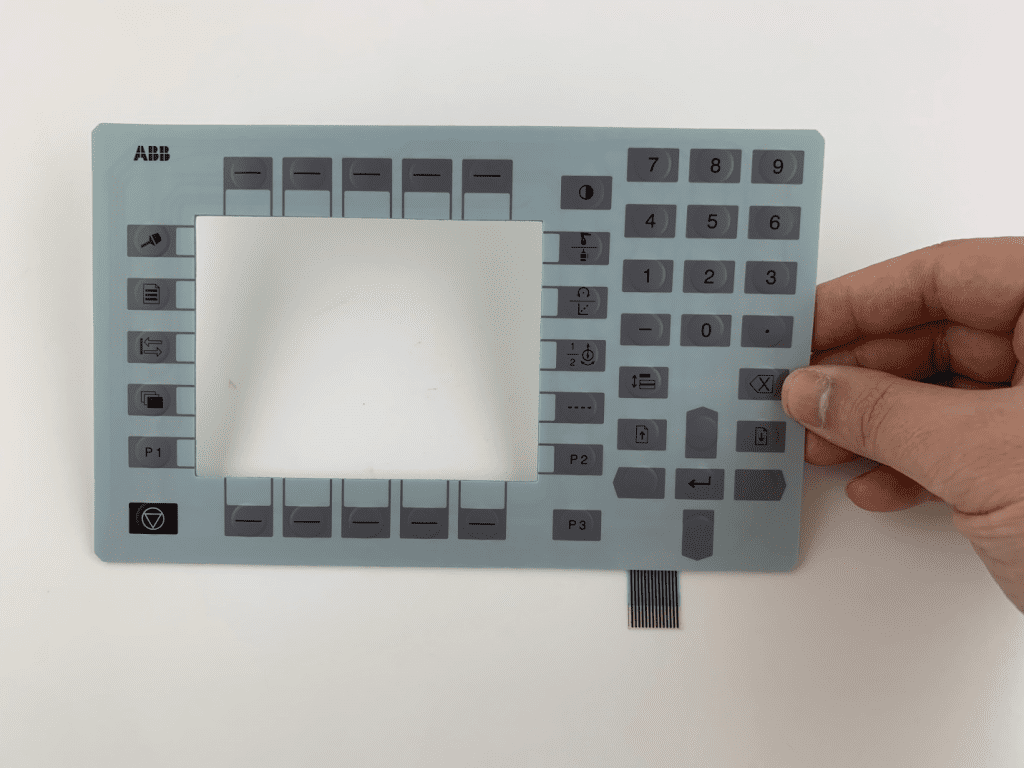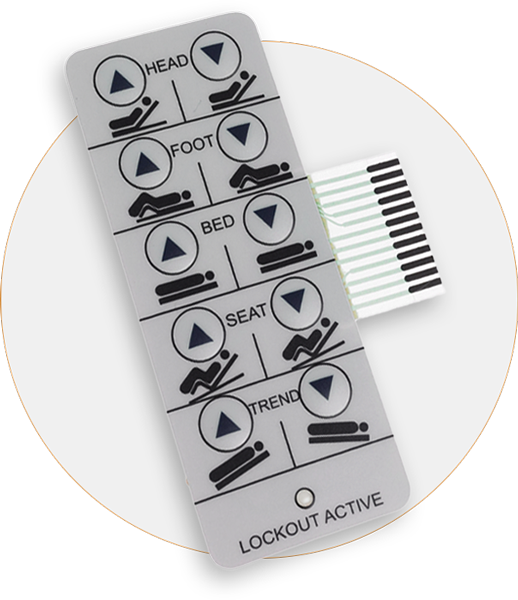Discover Just How Membrane Switches Feature and Their Role in Modern Electronics
Membrane Switches represent an advanced combination of modern technology and style within the realm of contemporary electronic devices, offering as essential interfaces in many devices. Included several layers, these switches use pressure-sensitive systems to facilitate customer interaction. Their applications extend numerous markets, from customer electronic devices to medical tools, highlighting their adaptability and value. Comprehending the intricacies of Membrane button performance and their more comprehensive ramifications in enhancing customer experience welcomes further exploration into their layout, benefits, and the ingenious developments forming their future in technology.
What Are Membrane Switches?

Membrane switches are distinguished by their toughness and resistance to ecological elements, such as dirt, wetness, and severe temperature levels. They can be personalized with different graphics, colors, and responsive responses options, improving individual experience while maintaining visual allure - membrane switches. In addition, the consolidation of printed circuits enables smooth integration into gadgets, improving general performance.
The flexibility of Membrane buttons is evident in their capability to sustain both easy and intricate control functions. They can incorporate functions such as LED indications and touch-sensitive innovation, satisfying specific individual requirements. As innovation continues to develop, Membrane Switches continue to be crucial for enabling user-friendly and effective interface, thereby playing a critical function in the development of modern-day digital devices.
Elements of Membrane Switches
Membrane switches are composed of a number of key components that function together to produce a practical and trustworthy interface. The primary elements include the graphic overlay, sticky layer, spacer layer, and conductive traces.
The graphic overlay functions as the interface, normally published on a flexible substrate such as polyester or polycarbonate. This layer not just supplies aesthetic charm however additionally includes responsive comments, aesthetic signs, and safety functions. Below the visuals overlay exists the adhesive layer, which secures the button to the device and ensures durability against ecological stress and anxieties.
The spacer layer is crucial for maintaining the needed gap in between the graphic overlay and the circuit layer. When pressure is used, this void allows for the activation of the button. The conductive traces, generally made from silver or carbon, create the electrical pathways that complete the circuit when the switch is involved.
Furthermore, a support layer may be included for structural support and insulation. These elements work together effortlessly, guaranteeing that Membrane buttons are both resilient and easy to use, making them essential in different modern electronic applications.
Just How Membrane Switches Job
How do Membrane Switches feature properly within electronic devices? Membrane Switches operate on the principles of pressure-sensitive modern technology, utilizing a layered construction that includes visuals overlays, adhesive layers, and conductive components. When an individual applies stress to the switch, the leading layer warps, allowing the conductive elements underneath to make call and complete an electrical circuit. This activity triggers the preferred feature within the device.
The layout of Membrane switches is critical for their effective procedure (membrane switches). The layers are carefully engineered to supply tactile feedback, sturdiness, and resistance to ecological factors such as wetness and dirt. The addition of domes-- small, elevated locations within the switch-- boosts responsive feedback, supplying users with an obvious click sensation upon activation
Moreover, Membrane buttons can be customized in regards to dimension, shape, and graphics, making them appropriate for different applications. They are usually utilized in click here for more control panels, clinical devices, and customer electronic devices due to their sleek design and dependability. On the whole, the efficient functioning of Membrane buttons is pivotal in boosting customer communication and ensuring smooth procedure in modern-day digital devices.

Applications in Modern Tools
Using their distinct style and capability, Membrane switches have come to be essential elements in a large range of contemporary digital tools. These flexible user interfaces are employed in consumer electronics, commercial devices, medical tools, and auto controls, giving seamless individual communication.
In customer electronic devices, Membrane buttons are typically located in appliances like microwaves, washing makers, and other house gadgets, where they make it possible for instinctive control with a sleek profile. Their inconspicuous design assists in assimilation right into small gadgets, boosting visual charm without jeopardizing functionality.
In industrial applications, Membrane Switches act as control panels for equipment, offering toughness and resistance to harsh settings. Their capacity to endure wetness and contaminants makes them excellent for use in production and processing markets.
Clinical gadgets likewise take advantage of Membrane buttons, which are developed to be simple to tidy and keep, making sure hygiene in scientific setups. They are typically used in analysis devices, person monitoring systems, and portable medical devices, where integrity is paramount.
Advantages of Membrane Buttons
Among the vital benefits of Membrane switches is their adaptability, which enables them to be customized for a selection of applications across numerous markets. These switches can be made in numerous forms and sizes, fitting one-of-a-kind product requirements while giving smooth combination right into tools. Their slim profile allows a smooth and compact style, typically improving the aesthetic allure of electronic products.
One more significant benefit is their toughness - membrane switches. Membrane buttons are generally resistant to dust, moisture, and chemicals, making them optimal for rough environments. This strength extends their lifespan compared to typical mechanical buttons, minimizing the demand for constant replacements
Furthermore, Membrane Switches deal cost-effectiveness. The production process includes printing company website innovations that lessen production costs, particularly for huge runs. This price, incorporated with low maintenance requirements, makes them an appealing option for manufacturers.

Final Thought
In final thought, Membrane Switches stand for a significant improvement in individual interface technology within modern electronic devices. As the need for resistant and user-friendly user interfaces continues to expand, the role of Membrane buttons in shaping user experience will most certainly expand.
Membrane Switches represent a you could check here sophisticated combination of technology and style within the world of contemporary electronic devices, offering as crucial user interfaces in many gadgets.In the realm of modern electronic devices, Membrane Switches offer as important components that facilitate user communication with tools. As modern technology continues to develop, Membrane Switches continue to be crucial for making it possible for effective and instinctive customer interfaces, thus playing an essential role in the improvement of modern digital gadgets.
Just how do Membrane Switches function properly within electronic tools? Generally, the efficient functioning of Membrane switches is critical in enhancing user communication and ensuring smooth procedure in contemporary electronic gadgets.